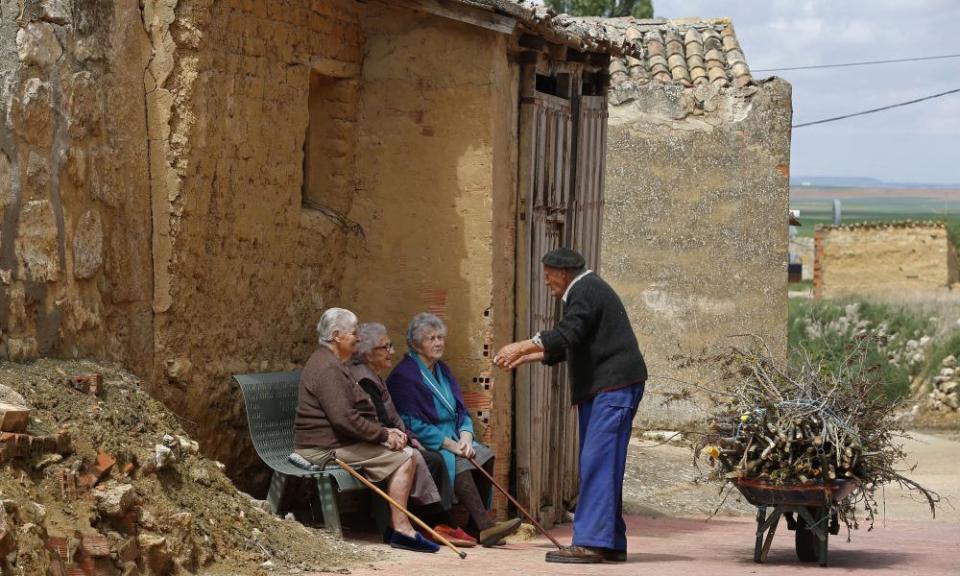Spanish village that dropped ‘Kill Jews’ name hit by antisemitic graffiti attack

Castrillo Mota de Judíos’ Sephardic centre was among four locations defaced in the ‘cowardly’ attack
The mayor of a Spanish village whose former name was an ugly reminder of the country’s medieval persecution of its Jewish population has vowed to carry on with plans for a Sephardic memory centre despite an antisemitic graffiti attack this week.
Seven years ago, the 52 eligible residents of Castrillo Matajudíos – Camp Kill Jews in English, voted in a referendum to change the village’s name back to Castrillo Mota de Judíos, which means Jews’ Hill Camp.
The name change was formally approved by the regional government of Castilla y León in June 2015.
Documents show the village’s original name was Jews’ Hill Camp and that the Kill Jews name dates from 1627 – 135 years after the edict that ordered Spain’s Jews to convert to Catholicism or be expelled.
Despite the authorities’ efforts to make amends for the past, the village has once again fallen victim to antisemitism.
On Monday morning, the mayor, Lorenzo Rodríguez, tweeted pictures of the graffiti, which included phrases such as “Juden Raus [Jews out]”, “Long live the Catholic Monarchs”, “The mayor’s sold out to the killer Jew”, and references to the grand inquisitor Tomás de Torquemada. The walls of the town hall had been defaced, as had those of the Sephardic memory centre – which is currently under construction – and a sign leading into the village.
Rodríguez said he had reported the graffiti to the Guardia Civil, adding the “cowardly, disgusting, violent and intolerant” attack would not stop the village from opening its Jewish memory centre next year as planned.
The mayor said the authorities in Castrillo Mota de Judíos would keep working “for the village, for its people, and for the past culture that once upon a time forged our present”.
Rodríguez said he hoped those responsible for the attack would be caught and held to account for a “direct assault on democracy, on ideas, and on the individual and collective freedom of a village”.
The Federation of Jewish Communities of Spain said the attack and the threats contained in the graffiti were “unacceptable and show the danger of the ideologies that led Europe to disaster”.
It added: “We offer our full support to the mayor of Castrillo Mota de Judíos and encourage him to continue working to recover the Jewish past. We also hope for peaceful and tolerant coexistence.”
The village is thought to have been established in the 11th century by a group of Jews who had been expelled from a nearby settlement. Although it became a popular trading hub and home to more than 1,000 people, life changed drastically when Queen Isabella and King Ferdinand expelled the Jews from Spain in 1492.
Some researchers believe the name was changed to signal loyalty to Catholicism and the crown, while others think it may have been a slip of the pen, changing mota (hill) to mata (kill).
In 2015, Spain attempted to atone for what it termed the “historical wrong” of the expulsion and persecution of its Jewish communities by offering citizenship to the descendants of those who were forced from their homeland.
The offer, which expired in October 2019, resulted in 132,226 people of Sephardic descent applying for Spanish citizenship.

 Yahoo Movies
Yahoo Movies 